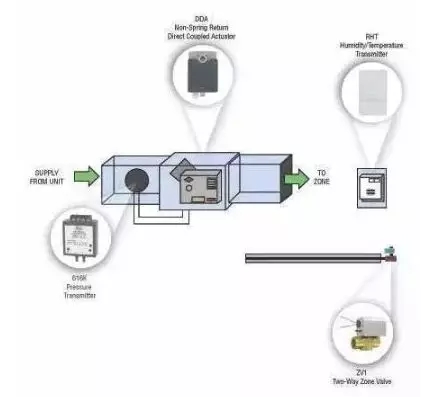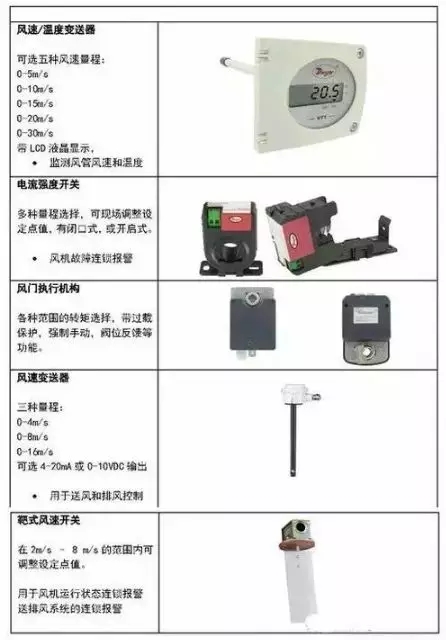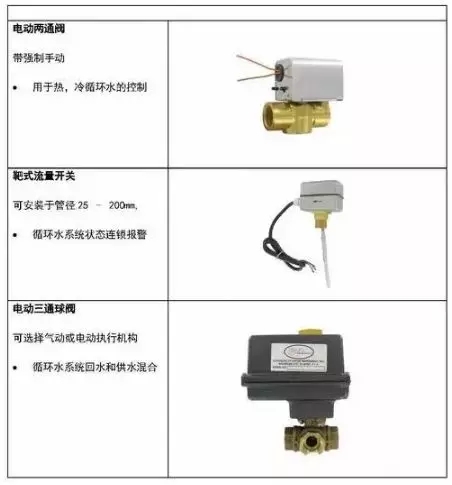With the progress of science and technology and the development of economy, the application of clean technology is more and more extensive. At present, in the fields of electronics, pharmaceuticals, food, bioengineering, medical treatment and other fields, the requirements for clean rooms are also increasing. It integrates technology of technology, architecture, decoration, water supply and drainage, air purification, HVAC and automatic control measurement. From the point of view of clean room, this paper talks about the application of automatic instrument control and monitoring technology in clean room.
Modern clean room technology divides the design and construction of clean room, test and test of clean room and operation of clean room into three categories, each of which includes automatic instrument control and monitoring technology.
Purification engineering is a highly systematic project, which includes purifying envelope structure and purifying air conditioning system. Whether the whole system is reasonable and can finally meet the requirements of air purification level and production process, depends on the level of instrument detection and automation. For the whole purification air-conditioning system, the purification air-conditioning unit and air duct are the important components of the system. Its function is to filter, heat or cool the air, humidify or dehumidify it and then send it to the places where it is needed. But whether the air into the room meets the requirements of cleanliness and whether the temperature and humidity of the air meet the requirements of production, it needs to be realized by testing and controlling equipment.

1. The characteristics of air conditioning system in clean room:
1.1 Fan with high pressure head and large air volume
1.2 Temperature, High Precision of Humidity Control
1.3 Positive and Negative Differential Pressure Control with High Accuracy
1.4 filter system requires high efficiency
1.5 Variable Air Volume Regulation Requirements
1.6 Requires High Stability and Reliability
In view of the characteristics of clean room engineering, higher reliability and stability are needed in control instruments and detection instruments, which can not only achieve the purpose of process production, but also save energy and reduce consumption, reduce production costs and protect the environment.
2. Control of micro differential pressure in clean room:
Maintain a small differential pressure between the clean room and the surrounding space according to the process requirements. Positive or negative pressure can be used. The differential pressure can be controlled by air supply, return air or residual pressure valve.
Pressure differential control is a very important link in the purification air conditioning system. Only by controlling the pressure difference in the purification area and ensuring reasonable air distribution can the requirements of purification and technology be met. For example, the clean workshop must maintain a certain positive pressure so that the air from the outside will not enter the purified area to ensure the cleanliness level; and through the control of different pressure difference in each purified area, to achieve the role of purification zoning, GMP requires that the pressure difference in different purified level areas should be controlled not less than + 5Pa. In biosafety clean room, pressure difference control is the key means to ensure safety barrier. The technical specification of biosafety laboratory building requires that the negative pressure gradient of laboratory be controlled steadily and reliably. Therefore, pressure difference control is very important for purifying air conditioning system.
According to the "Code for Clean Room Design" (hereinafter referred to as "Code"), if the indoor pressure of the clean room is kept higher than the external pressure, it is a positive pressure clean room; otherwise, it is called a negative pressure clean room. Positive pressure and negative pressure are relative. A clean room is a positive pressure clean room for the atmosphere, but it may be a negative pressure clean room for another room. The Code stipulates that the pressure difference between clean rooms of different grades and between clean areas and non-clean areas shall not be less than 5 Pa, and that between clean areas and outdoor areas shall not be less than 10 Pa. Clean indoor corridors and non-clean areas maintain at least 30 Pa positive pressure difference. The basic principle of establishing the pressure difference is that the supply air volume is larger than the return air volume, the exhaust air volume and the leakage air volume.
Cleanliness control of clean room:
The control of cleanliness is mainly achieved through the filter and the indoor ventilation. The performance of filters and long-term blockage will affect the cleanliness of air. Therefore, it is necessary to detect the state of the filter, but also to master the operation state of the fan and the wind pressure of each duct.
4 Clean room air volume control:

The air supply rate of clean room is determined by cleanliness grade, but the air supply rate will inevitably be affected by dust production, pressure difference and other factors, resulting in increased energy consumption of equipment and increased operating costs. If the system adopts frequency conversion device, then according to the characteristics of production process, on-site detection and control devices are set up to regulate the discharge. If the air volume is changed successively, the exhaust fan should be turned on when the individual processes are not in production, which will result in the consumption of electric energy. Because of the use of frequency conversion device, according to the value of air supply required by the system, to change the speed of the fan, thereby greatly reducing the power consumption.
5 Typical products of other automatic control instruments
5.1 Temperature and Humidity Control Instrument:

5.2 Wind speed, fan control instrument:

5.3 Control Instruments for Hot and Cold Water Circulation System:

For a central air-conditioning system, there will also be piping systems and equipment equipped with hot water and cold water, which need to be equipped with the necessary automatic control instruments.
These can constitute the basic automatic control system of air conditioning in purification engineering. According to the requirements of the project, the automatic control system of analog instrument or computer control system can be formed.
5.4 Installations and instruments that need maintenance and repair in construction acceptance and normal production
5.4.1 Wind Volume and Speed Detection
The detection of air volume is the premise of other detection projects, and also verifies the rationality of the system design.
5.4.3 Cleanliness Test
For each clean room (area), the sampling times should be more than three times, and different testing instruments should be selected according to the particle size range required by the cleanliness level.
5.4.4 Portable Temperature and Humidity Detection
The temperature and humidity are measured according to the Code for Construction and Acceptance of Clean Room.
5.4.5 Illuminance Detection
Testing methods are in accordance with the Code for Construction and Acceptance of Clean Room
5.4.6 Noise Detection
Sound level meter of octave analyzer. Detection background should be in the air conditioning system and all other equipment shutdown, and should be carried out in the evening.
Detection of 5.4.7 Microorganisms
At present, the detection methods of microorganisms are generally phytoplankton and sedimentation bacteria. The basic process of determination is through the process of capture-cultivation-counting.
The above is an overview of the application of clean room automation instruments. (Information from the Internet)
These can constitute the basic automatic control system of air conditioning in purification engineering. According to the requirements of the project, the automatic control system of analog instrument or computer control system can be formed.
5.4 Installations and instruments that need maintenance and repair in construction acceptance and normal production
5.4.1 Wind Volume and Speed Detection
The detection of air volume is the premise of other detection projects, and also verifies the rationality of the system design.
5.4.3 Cleanliness Test
For each clean room (area), the sampling times should be more than three times, and different testing instruments should be selected according to the particle size range required by the cleanliness level.
5.4.4 Portable Temperature and Humidity Detection
The temperature and humidity are measured according to the Code for Construction and Acceptance of Clean Room.
5.4.5 Illuminance Detection
Testing methods are in accordance with the Code for Construction and Acceptance of Clean Room
5.4.6 Noise Detection
Sound level meter of octave analyzer. Detection background should be in the air conditioning system and all other equipment shutdown, and should be carried out in the evening.
Detection of 5.4.7 Microorganisms
At present, the detection methods of microorganisms are generally phytoplankton and sedimentation bacteria. The basic process of determination is through the process of capture-cultivation-counting.
The above is an overview of the application of clean room automation instruments. (Information from the Internet)
Shandong Aide Purification Engineering Co., Ltd. has strong technical strength and construction experience, according to the different needs of clean places, using professional equipment, to form different levels of clean standard space, to create the most suitable production and working environment. At present, it has established close cooperation with many enterprises and is a trustworthy professional purifying project implementer. Wechat Public Number: Aide-188









